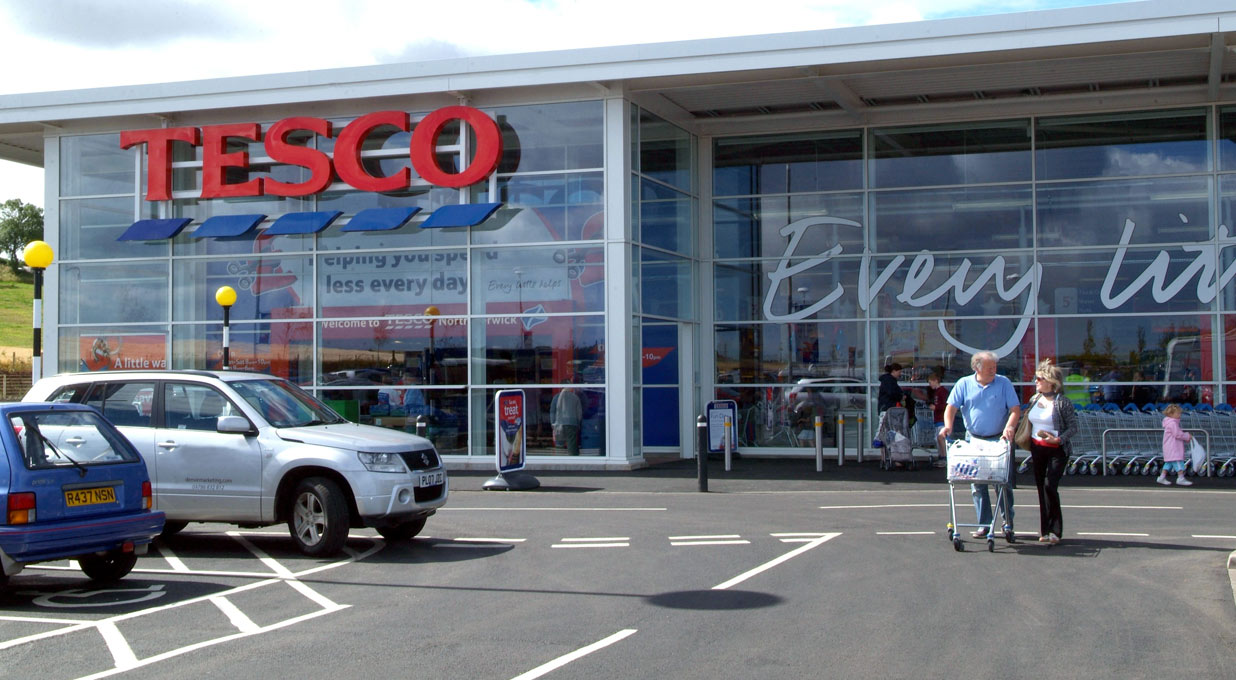Tesco’s first-half sales grew 4.0% to £31.5bn, ignoring fuel sales and exchange rates. Growth has been led by increased volumes as Tesco continued to invest in keeping prices low and goods inflation eased. Volumes in its Finest range were up 14.9%.
Retail underlying operating profit rose 10.0% to £1.6bn. Cost cuts and productivity improvements more than offset increases in staff pay and efforts to keep prices down.
Free cash flow fell from £1.4bn to £1.3bn. Net debt of £9.7bn was 2.1% lower at the half-year mark.
Full-year guidance has been upgraded as a result of better-than-expected volume growth. Underlying Retail operating profit is now expected to be around £2.9bn, up from “at least £2.8bn”.
An interim dividend of 4.25p per share has been announced, up 10.4%. Tesco’s “on track” to complete its £1.0bn share buyback programme by April 2025, with £575mn completed in the first half.
The shares rose 1.7% following the announcement.
Our view
Tesco delivered for customers and investors alike in the first half. The group’s working really hard to keep its prices low, which looks to be the right move. It’s drawing in more price-sensitive customers, which is boosting market share and volumes, and driving sales higher.
Tesco’s enormous scale and the mature, deeply rooted nature of its relationships have been a key tool in allowing Tesco to keep its prices down. The group’s strategy relies on being able to offer better all-round pricing than the competition, and Tesco’s delivered remarkably well on that.
The group’s expanded Tesco Finest range is helping it poach customers from more premium supermarkets. And those who already shop at Tesco are treating themselves at home rather than going out, boosting Finest volumes. We view both of these shifts as potentially long-term in nature, meaning there’s more juice to be squeezed.
And Tesco isn’t just a retailer, although that’s the bulk of the story. The wholesaler, Booker, offers another route to growth across the key business streams of catering and retail. Most of the banking division was sold to Barclays for £700mn, but Tesco has kept the most profitable bits. This portion is set to grow steadily and further diversifies the group’s income streams.
Despite a small decline, there’s set to be around £2bn of free cash flow pumping round the business this year. That underpins the group’s ability to invest in staying competitive, and sustain the attractive 3.8% prospective dividend yield. No dividend is ever guaranteed.
But for all the positives, there are things to keep in mind. Aldi and Lidl may not be an existential threat, but they are nabbing shoppers from bigger names. The wider pivot to value offerings, including in Europe where Tesco has a substantial footprint, means it’s exposed to consumers who are feeling the pinch economically. So far this has been managed well. Growing volumes by appealing to both cost-conscious customers and those shopping the Finest range is a big ask. Keeping this up and at the right price points is even harder and could have implications for margins.
We’re also keeping an eye on Clothing & Home sales. These aren’t the main story, but they do count. Sales here have been broadly flat, reflecting the decision to exit lower-margin categories, including big electrical items and footwear. This makes sense in the current environment while people resist spending on non-essentials.
Tesco’s more reliable revenue streams, market-leading proposition, and income potential shouldn’t be overlooked. But many of those strengths are now baked into the valuation, which is sitting ahead of its long-term average. This means there’s pressure to stay ahead of the competition, which increases the risks of ups and downs if any slip-ups occur.
The Non-Executive Chair of Hargreaves Lansdown plc is also a Non-Executive Director of Tesco plc.
Environmental, social and governance (ESG) risk
The retail industry is low/medium in terms of ESG risk but varies by subsector. Online retailers are the most exposed, as are companies based in the Asia-Pacific region. The growing demand for transparency and accountability means human rights and environmental risks within supply chains have become a key risk driver. The quality and safety of products as well as their impact on society and the environment are also important considerations.
According to Sustainalytics, Tesco’s management of ESG risk is strong.
The group has a corporate responsibility committee overseeing the group’s social and environmental obligations. It also discloses a substantial amount of ESG-related information in its annual report. However, it has ongoing involvement in controversies related to human rights in supply chains.
Tesco key facts
All ratios are sourced from Refinitiv, based on previous day’s closing values. Please remember yields are variable and not a reliable indicator of future income. Keep in mind key figures shouldn’t be looked at on their own – it’s important to understand the big picture.

